TVs makers have shown a technological breakthrough this year. The list of main innovations includes:
– OLED Evo panel (LG G1 Gallery Series OLED TV);
– new Sony BRAVIA XR A80J & A90J TVs with innovative XR Cognitive Processor;
– Hisense Dual Cell technology (75U9DG);
– TriChroma Laser technology in Hisense L9G UST Laser TV.
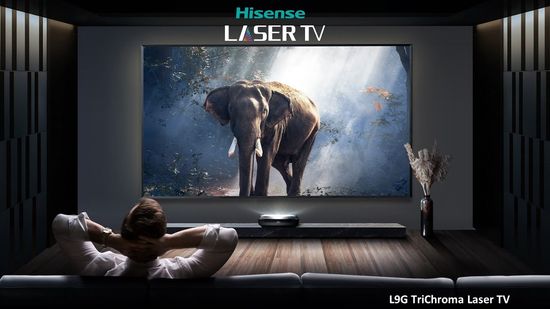
– MiniLED backlit (Samsung Neo QLED & LG QNED series and TCL OD-Zero MiniLED backlit).
As a result, many industry leaders have expanded their lineup with innovative TVs.
In addition, fierce competition has severely limited the prices of OLED TVs. Specifically, the list of relatively inexpensive but great 2021 models includes:
– LG OLED C1 – $ 1,800 (65”), Best Seller;
– Sony A80J OLED with XR Cognitive Processor – $ 2,200 (65”).
4K LCD TVs
The traditionally popular 4K LCD TVs segment has expanded to include models with an innovative miniLED backlit. Full Array Local Dimming (FALD) with miniature LEDs dramatically improves overall image dinamic contrast by controlling backlit for frame areas depending on its content.
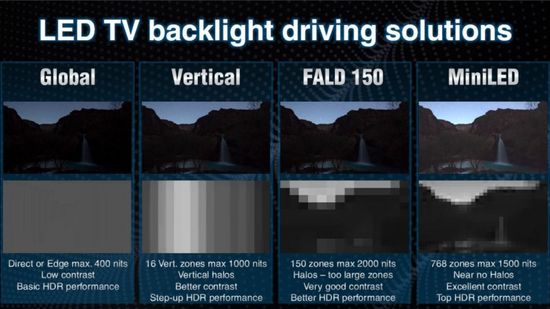
As a result, when combined with Quantum Dots (QD) technology, these models provide a wide color gamut, high color accuracy and excellent dynamic contrast. In fact, the market has shaped the premium segment of LCD miniLED QD TVs with excellent picture quality at an affordable price. This list includes, for example, Samsung Neo series and LG QNED TVs.
But, perhaps, for the first time, the Chinese giants were able to successfully squeeze out South Korean competitors by presenting the excellent TCL 6 Series R646 (2021) and Hisense U8G (2021). They really claim to be this year’s bestsellers among LCD TVs with QD and miniLED backlit. Priced at around $ 1,000, these models provide high image quality and support virtually all innovative technologies. Probably, Samsung Neo QLED QN90A and LG QNED90 at $ 2,000 and $ 1,600 for the 65-inch model win in terms of specs and functionality. But the almost two-fold price difference is a very significant argument in favor of the Chinese companies. Nevertheless, the choice greatly depends on the budget and individual attitude to brands.
The choice between TCL 6 Series R646 and Hisense U8G is more ambiguous and requires more detailed analysis.
TCL 6 Series & Hisense U8G
The TCL 6 Series R646 (2021) replaces R635 (2020).
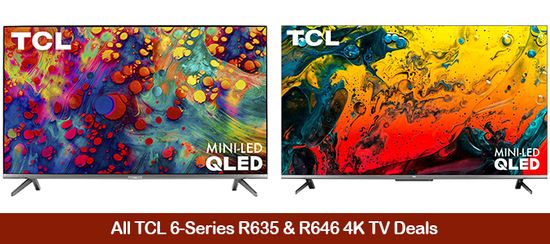
In fact, OS is their main and only difference. The new R646 has Google TV, and the R635 – Roku. As usual, the company uses different names for the regions. For example, in Canada they are called R646-CA.
Both models provide 4K HDR picture quality, use Contrast Control Zone technology with miniLED backlit, support Wide Color with QD technology, Hands-free voice control, AiPQ Engine technology, Variable Refresh Rate (VRR), THX Certified Game Mode, etc. In addition to the OS, the list of minor differences includes (R646 vs R635):
– Audio Power (15W + 15W) vs (8W + 8W);
– R635 does not support HDR10+;
– R635 has fewer ports;
– Voice Enabled Remote Control – RC902N vs RC580.
Conventionally, the R646 can be positioned as the current model for 2021 in the TCL 6-Series.
Black Friday price drop reached $ 898 for 65-inch model. But today the R635 is being offered for $ 1,000. For R646, the same price is available only on BestBuy.com. On the company’s website their price already reaches $ 1,300 for 65″ TV.
The Hisense U8G replaces the Hisense H9G (2020).
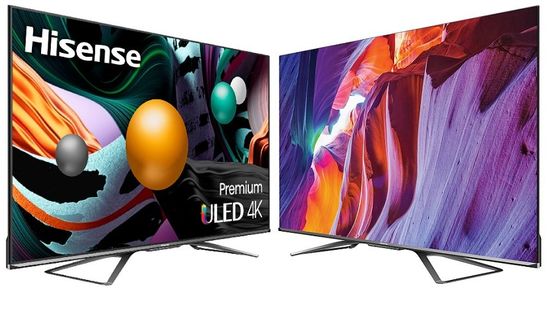
Major enhancements include two HDMI 2.1 ports and improved color gamut. This article reviews the specs for the North American model. In TVs for other regions, they may differ despite the identical name. In America, the price of this model is just under $ 1,000.
TCL 6-Series 646 vs Hisense U8G
Available models
R646:
– 55″ (138.7cm);
– 65″ (163.8cm);
– 75″ (189.5cm).
U8G:
– 65″.
Main specs (R646 vs U8G):
– Contrast (Native Contrast / Contrast with local dimming)
8,542: 1 / 19,300: 1 vs 5,279: 1 / 7,923: 1;
– Max. Brightness
1,200 nits vs 1,400 nits;
– FALD (Full Array Local Dimming) with miniLED
240 zones vs 360 zones (for 65-inches models);
– Audio
30W vs 20W;
– Operating System
Google TV vs Android 10;
– Variable Refresh Rate
AMD Freesync vs AMD Freesync, VRR (HDMI Forum) and G-Sync Nvidia.
As known, AMD FreeSync is a technology for standards support, such as DisplayPort Adaptive-Sync. It was developed in 2015 as an alternative to Nvidia’s G-Sync. HDMI Forum VRR is a new VRR format.
Both series support HDR10, HLG, HDR10+, Dolby Vision video technologies, and DTS, Dolby Digital, Dolby Atmos audio formats, have 120Hz VA panel with response time of 4ms, HDMI ARC / eARC (Enhanced Audio Return Channel) connection, 2x HDMI 2.1, 14-15 ms Input Lag for 4K@60Hz + HDR, and 6ms – for 4K@120Hz, and compatible with Google Assistant & Amazon Alexa.
Unlike R646, U8G has USB 3.0, which boosts the maximum data transfer rate up to 5Gbps.
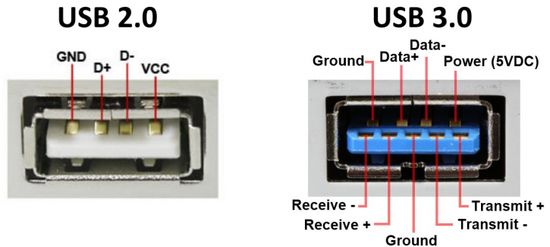
In turn, R646 supports the Timeshift option for recording the broadcast to a USB flash drive, hard drive, etc, connected via a USB port. It’s activated by pressing ‘pause’. In this case, the image on the screen freezes. After pressing “play”, TV resumes broadcasting from the moment it was stopped.
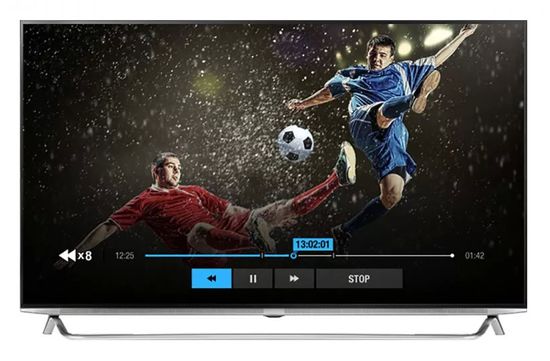
In fact, this mode plays back the broadcast with a time shift.
Brightness
SDR Brightness (TCL R646 vs Hisense U8G):
– Peak 2% Window – 690 nits (or cd/m²) vs 954 nits;
– 10% Window 1,027 nits vs 1,296 nits;
– 25% Window 1,053 nits vs 1,364 nits;
– 50% Window 836 nits vs 814 nits;
– 100% Window 804 nits vs 616 nits.
Overall, the Hisense U8G is, of course, brighter. But SDR brightness of TCL is also more than enough. Therefore, both TVs compensate for glare without any problems, even in the most bright rooms.
TCL demonstrates max brightness with Local Contrast setting to ‘High’ and Color Temperature to ‘Cool 4’. It’s 1,180 nits in the 25% window. The maximum brightness of Hisense with active contrast at ‘Medium’ reaches 1,401 nits in a window of 25%. But, of course, these settings will reduce image accuracy.
HDR Brightness (TCL R646 vs Hisense U8G):
– Peak 2% Window 758 nits vs 1,007 nits;
– 10% Window 1,173 nits vs 1,572 nits;
– 25% Window 1,206 nits vs 1,627 nits;
– 50% Window 941 nits vs 969 nits;
– 100% Window 907 nits vs 734 nits.
Of course, the HDR peak brightness of the Hisense U8G is impressive. But unfortunately, its EOTF (Electro-Optical Transfer Function) is not ideal, and many scenes in HDR are displayed too bright, significantly reducing color accuracy. As known, the EOTF (or gamma correction) is the mathematical function for transferring an electronic signal into the optical signal, which specifies the brightness level.
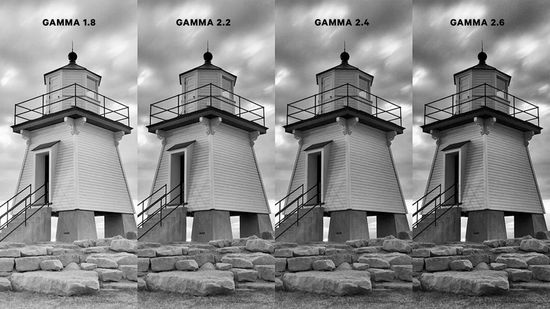
High HDR peak brightness of TCL provides excellent HDR performance, reproducing all highlights clearly. In addition, enabling Dynamic Tone Mapping and setting the Gamma to ‘1.8’ will increase the EOTF brightness without altering the peak brightness when the image is too dim.
Local Dimming and Color Gamut
Local Dimming
The 55-inch TCL R646 uses 128 local dimming zones, 65-inch – 240. The performance of this function is inferior to premium LCD models, for example, Samsung Neo or LG QNED. But it’s quite effective averages the black level, almost completely eliminating blooming around bright objects. Uniformity also is good. TV also provides fairly smooth transitions between the zones for fast-moving objects. Of course, they are visible in the test pattern, but practically disappear when playing real content.
The ‘Low’ setting in Local Contrast seems to be more optimal because an image with a more aggressive ‘High’ setting may contain blooming and too much black. However, the change in settings is noticeable only for SDR content, but practically does not change for HDR content:
SDR – ‘Low’ / ‘High’ Local Contrast – 19,300:1 / 15,692:1;
HDR – ‘Low’ / ‘High’ Local Contrast – 18,952:1 / 18,766:1.
55″ Hisense U8G uses 132 dimming zones, 65-lnches model – 360. In general, this function works great. Transitions between zones are noticeable when using test patterns only.
Color Gamut
TCL R646
– DCI P3 xy / DCI P3 uv – 91.67% / 96.52% (good value > 90%);
– Rec 2020 xy / Rec 2020 uv – 69.43% / 74.64%.
TV provides good coverage of the commonly-used DCI P3 color space. The coverage for wider Rec.2020 also is quite acceptable in this class.
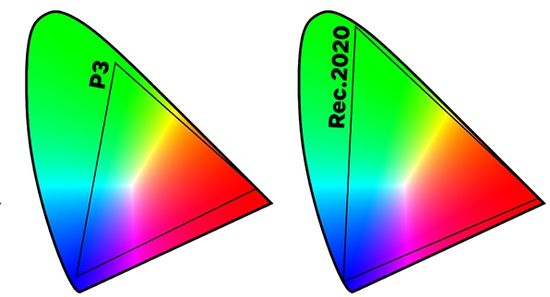
Hisense U8G
– DCI P3 xy / DCI P3 uv – 97.52% / 97.11% (good value > 90%);
– Rec 2020 xy / Rec 2020 uv – 74.52% / 78.39%.
Its excellent color gamut surpasses even the Samsung QN90A, which is about twice as expensive.
Key features comparison
Calibration
TCL R646
Pre Calibration / Post Calibration (Movie – Picture Mode, Warm – Color Temp Setting, and Gamma Setting 2.2):
– White Balance dE – 3.67 / 0.26 (good value < 3);
– Color dE – 2.51 / 1.46 (good value < 3);
– Gamma – 2.30 / 2.20 (2.1 – 2.3);
– Color Temperature – 6,239 K / 6,512 K (ideal – 6,500 K).
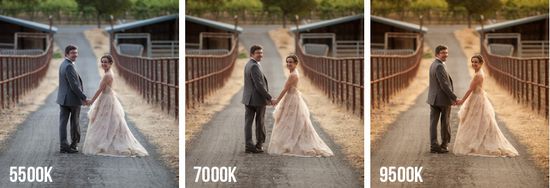
The ‘out-of-the-box’ accuracy clearly does not correspond to the premium level, but accuracy after calibration is fantastic.
Hisense U8G
Pre Calibration / Post Calibration (Theater Night – Picture Mode, Low – Color Temp Setting, and Gamma Setting 2.2):
– White Balance dE – 1.62 / 0.44 (good value < 3);
– Color dE – 1.42 / 1.06 (good value < 3);
– Gamma – 2.19 / 2.19 (2.1 – 2.3);
– Color Temperature – 6,439 K / 6,497 K (ideal – 6,500 K);
Hisense U8G has excellent accuracy ‘out-of-the-box’, requiring virtually no additional calibration.
Viewing angles
Traditionally for VA panel, both models have narrow viewing angles (R646 vs U8G):
– Brightness Loss – 30° vs 36°;
– Black Level Raise – 13° vs 22°;
– Gamma Shift – 21° vs 16°.
Of course, this aspect significantly reduces the viewing comfort in a large company.
Response Time (80% / 100%)
– 3.9 ms / 11.1 ms (TCL R646) vs 3.8 ms / 9.3 ms (Hisense U8G).
The overall response time of TCL R646 is a very good, but the 0-100% transition is slow, with smearing a black. With rare exceptions, Hisense U8G clearly displays motion in fast-moving scenes.
Conclusion
List of TCL R646 pros vs Hisense U8G:
– wider model range (3 vs 1);
– better contrast (8,542: 1 vs 5,279: 1 native contrast and 19,300: 1 vs 7,923: 1 contrast with local dimming);
– very efficient calibration;
– more powerful audio (30W vs 20W);
– Timeshift support.
List of Hisense U8G pros vs TCL R646:
– slightly cheaper;
– brighter;
– excellent ‘out-of-the-box’ accuracy;
– great color gamut;
– VRR: AMD Freesync, VRR (HDMI Forum) and G-Sync Nvidia support;
– more local dimming zones (360 vs 240 for 65-inches models);
– USB 3.0.
Unfortunately the VA panels of both TVs have narrow viewing angles. In addition, TCL R646 does not correctly reproduce 480p content, and Hisense U8G distorts colors in some HDR scenes due to incorrect operation of EOTF (Electro-Optical Transfer Function). Some users occasionally complain about artifacts, halo and input delay in some games, which is typical for this price segment.
In general, the Chinese giants have presented excellent models that have a good chance of being among the bestsellers. Given their almost equal value for money, the choice will probably depend on the individual buyer’s preferences for the brand and the availability of models.
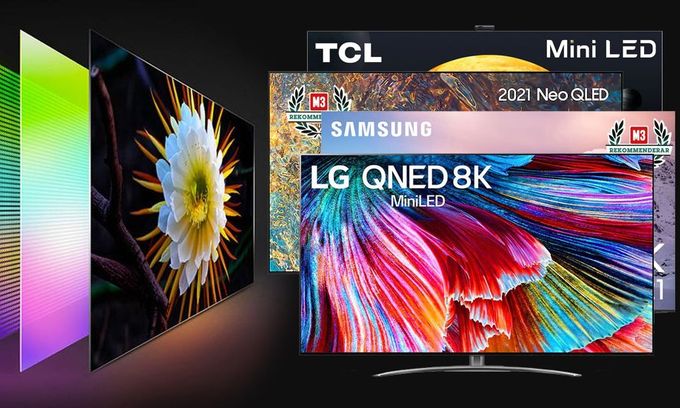
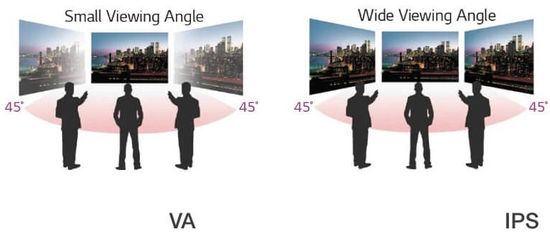
Pingback: LG OLED vs Samsung Neo QLED TVs 2021 Review - The Appliances Reviews
Pingback: Samsung Neo 4K QN85A vs QN90A Review - The Appliances Reviews